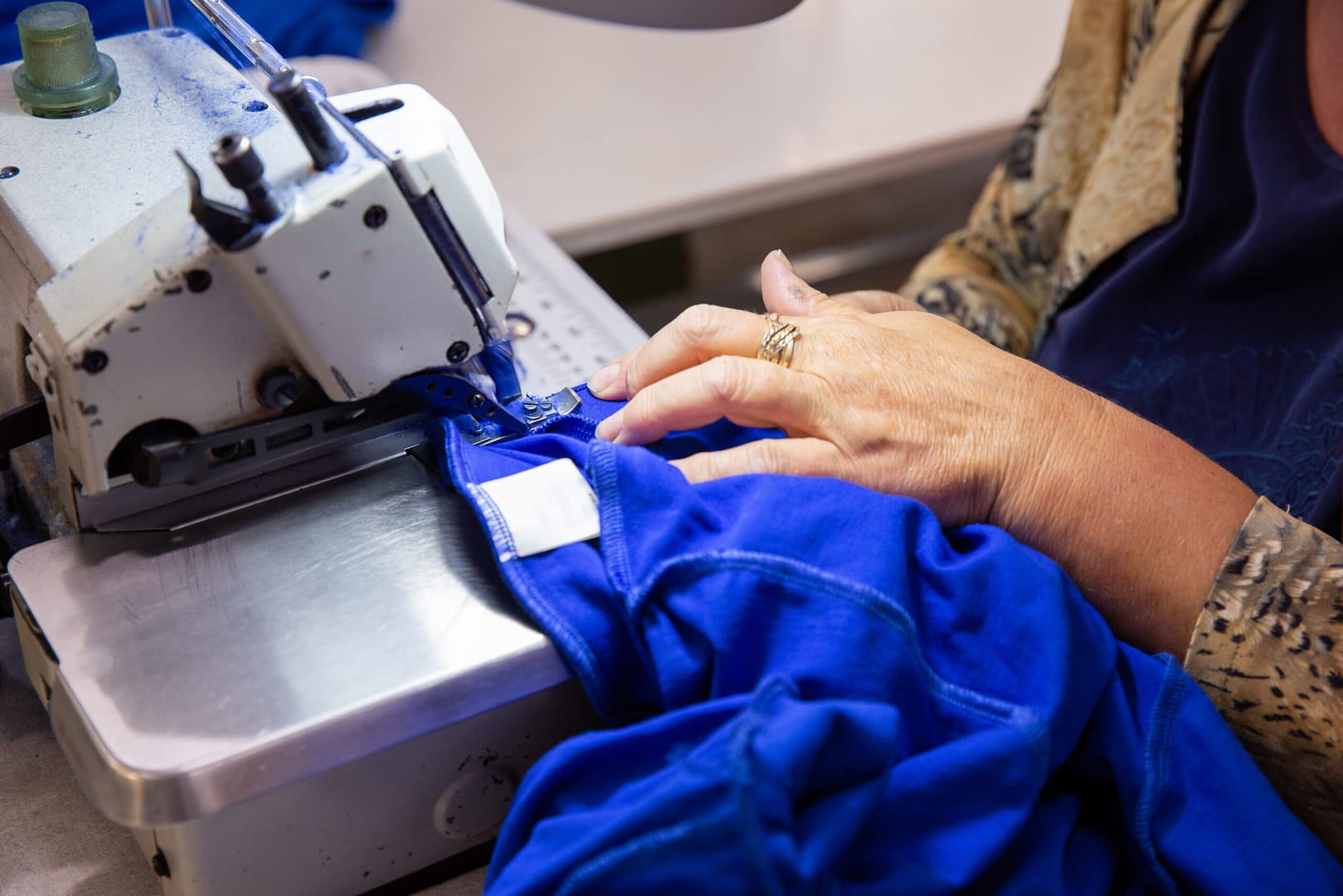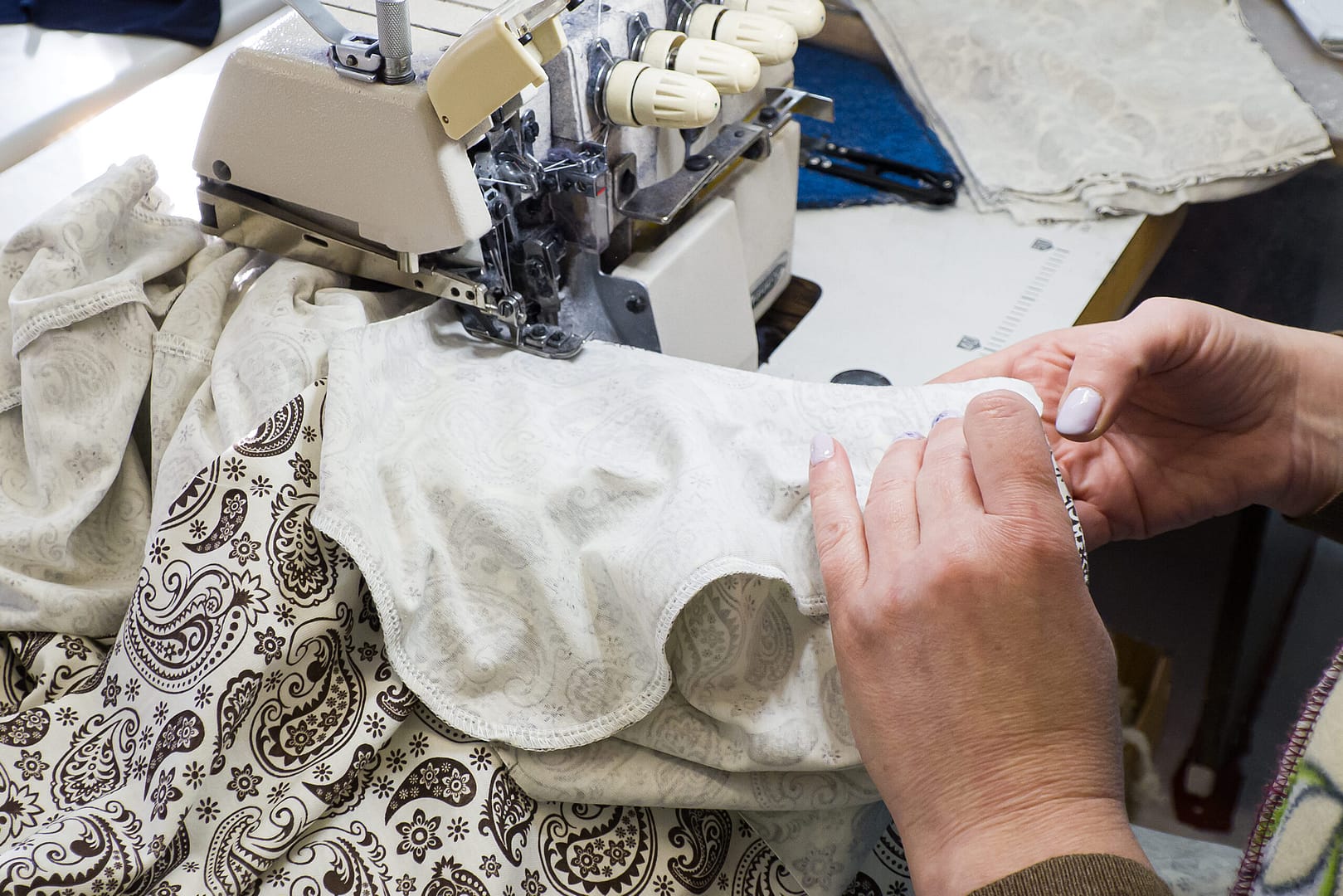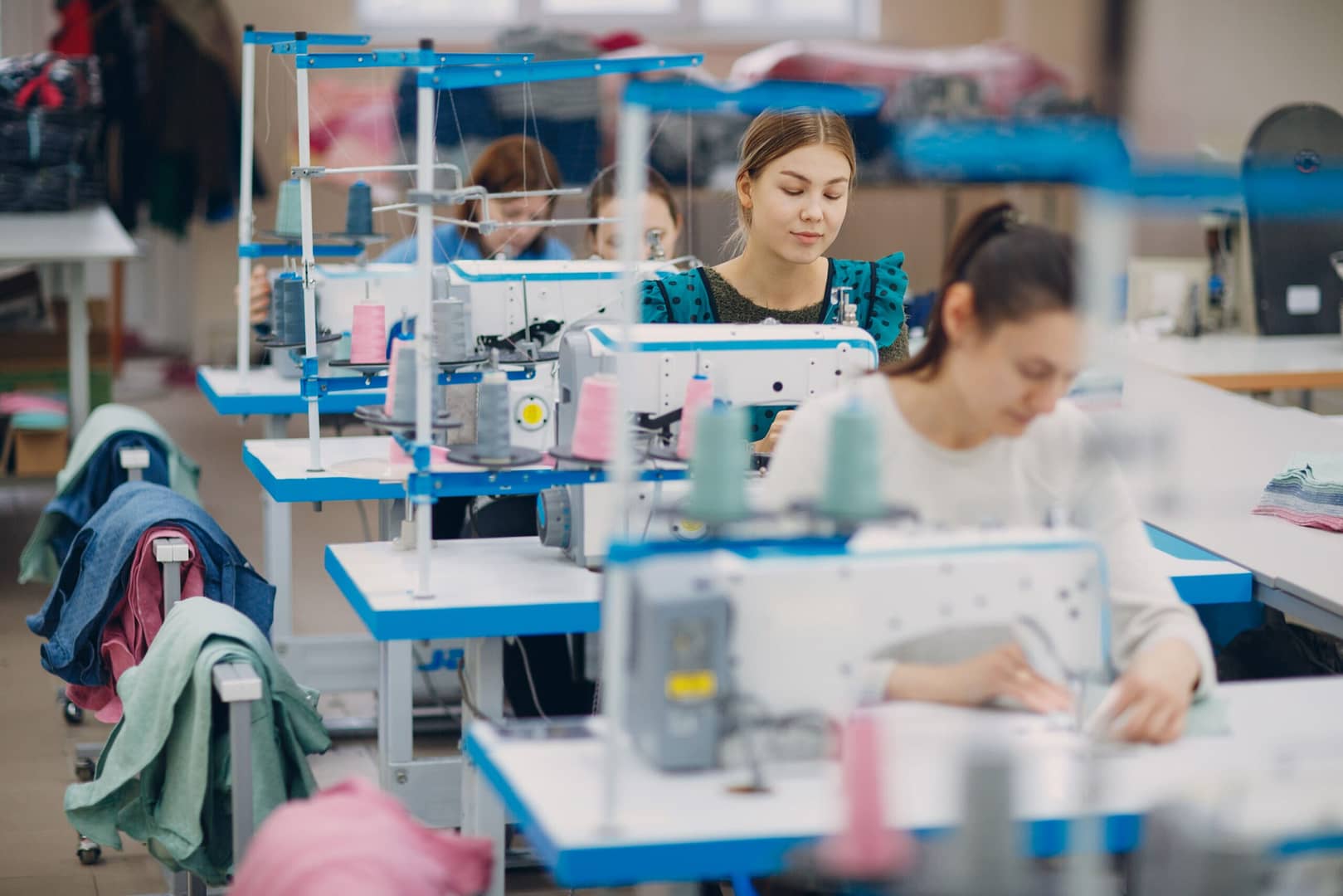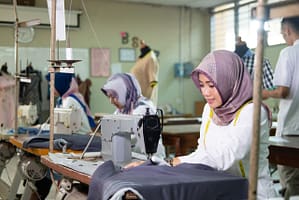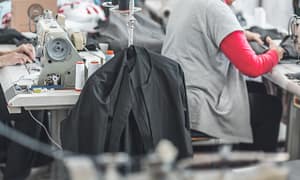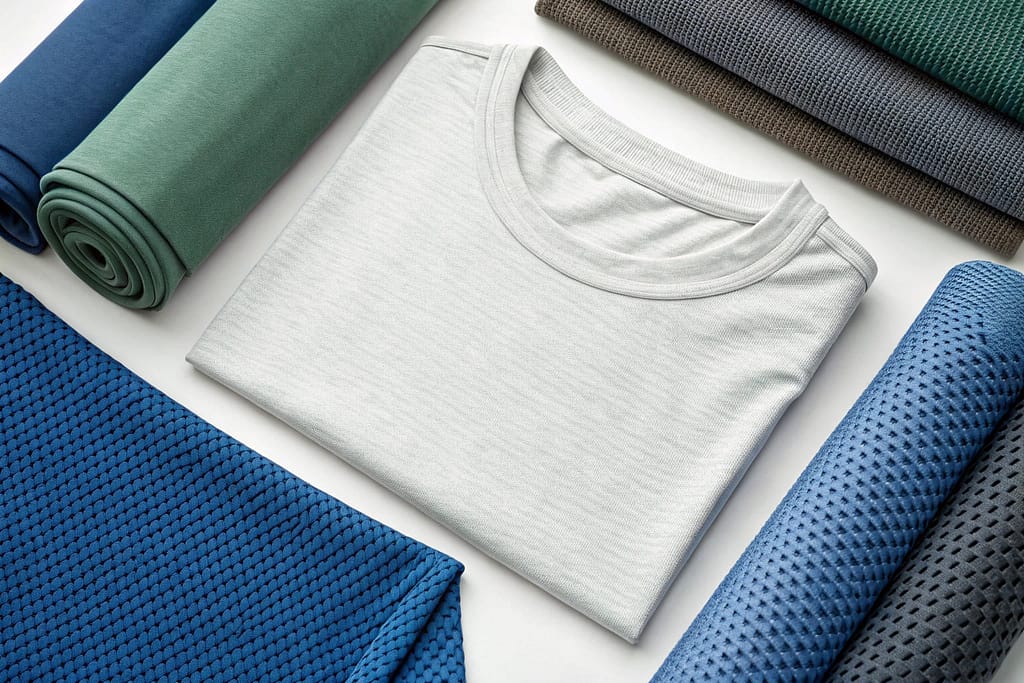
Choosing the best t-shirt material can feel overwhelming with so many options on the market. Whether you’re after all-day comfort, moisture-wicking for workouts, or a stylish fit for casual outings, the fabric you choose makes all the difference.
But not all t-shirt fabrics are created equal. Some are breathable and lightweight, perfect for hot summer days, while others offer durability and resistance to wrinkles. If you’ve ever wondered why one t-shirt stays soft for years while another shrinks after one wash, it all comes down to the material.
In this guide, we’ll break down the most popular types of t-shirt materials — from classic cotton to performance-ready polyester. We’ll explore which fabrics suit different purposes, how to choose the right material for your lifestyle, and answer the most common questions people have about t-shirt fabrics.
Key Takeaways:
Cotton offers breathability and softness, but it can shrink and wrinkle.
Blends like CVC and TC provide a balance of comfort, durability, and affordability.
Premium fabrics like Modal, Tencel, and Bamboo are perfect for luxury and sustainable brands.
Synthetic fabrics like Polyester and Nylon are durable, wrinkle-resistant, and moisture-wicking, making them great for sportswear.
Functional fabrics like Coolmax® and recycled polyester (rPET) cater to performance-driven and eco-conscious brands.
Understanding GSM and Yarn Count ensures you get the right thickness and texture for your brand’s needs.
Key Factors to Consider When Choosing T-Shirt Material
When selecting the perfect fabric for your custom T-shirts, you should consider the following:
Comfort
A soft and breathable fabric enhances the wearer’s experience. Natural fibers like cotton are known for their skin-friendly properties, while synthetic blends offer better durability with slight compromises on breathability.
Durability
Your T-shirts should maintain their shape and color after multiple washes. Some fabrics, like 100% cotton, may shrink if untreated, whereas polyester blends resist shrinkage and wrinkles.
Printability
If your brand relies on screen printing, embroidery, or sublimation, choosing the right fabric is crucial. For example, cotton absorbs ink well, while polyester works better for sublimation printing.
Fabric Weight (GSM – Grams per Square Meter)
GSM determines the thickness and density of the fabric:
- Lightweight (120-170 GSM): Soft and breathable, ideal for summer T-shirts.
- Medium-weight (180-210 GSM): Standard for casual and promotional T-shirts.
- Heavyweight (220-280 GSM): More structured and durable, suitable for premium or winter T-shirts.
Yarn Count
Fabric yarn count measures the fineness or coarseness of threads used in weaving:
- Low yarn count (20s, 30s): Thicker and more durable, often used in budget T-shirts.
- High yarn count (40s, 50s): Softer and smoother, preferred for premium-quality T-shirts.
Cost
Fabric choice affects production costs. While cotton is affordable, specialty fabrics like Tencel or organic cotton may be pricier but cater to a niche, high-end market.
Sustainability
As eco-friendly fashion gains popularity, materials like organic cotton, bamboo fiber, and recycled polyester appeal to environmentally conscious consumers.
The Most Popular T-shirt Fabrics
1. 100% Cotton
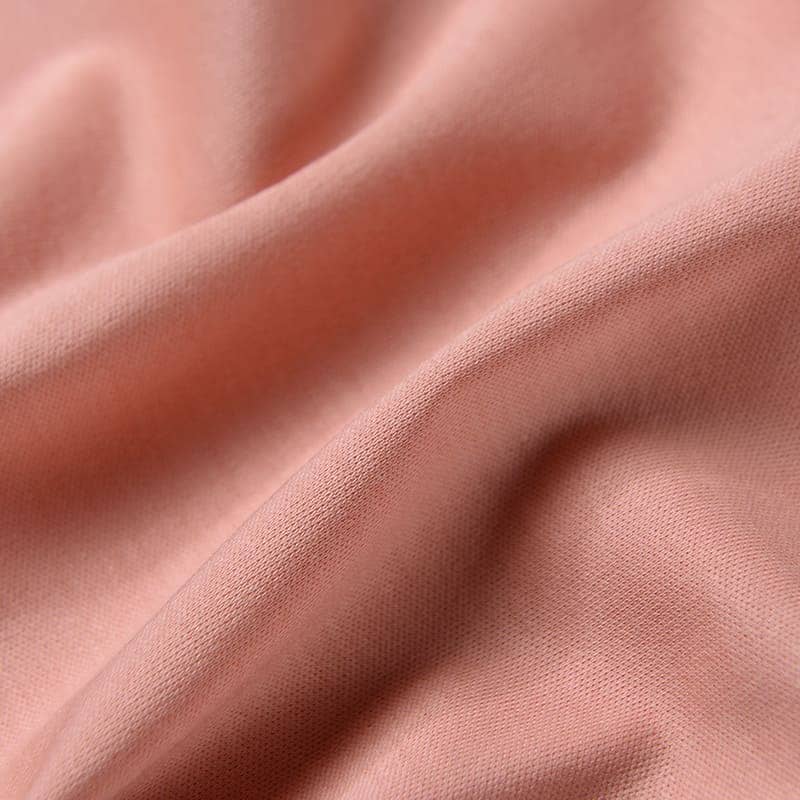
Why it’s popular: Cotton is the most commonly used fabric for T-shirts, known for its softness, breathability, and natural feel.
Features:
✔ Soft and comfortable on the skin
✔ Highly breathable, making it ideal for warm weather
✔ Hypoallergenic—suitable for sensitive skin
✔ Absorbs moisture well
Drawbacks:
✖ Wrinkles easily
✖ Prone to shrinking if not pre-treated
✖ Loses shape over time after repeated washing
Best for: Casual everyday wear, basic and fashion T-shirts, streetwear, promotional T-shirts
Variants of Cotton:
- Combed Cotton – A refined version where short fibers are removed, making it smoother and more durable.
- Mercerized Cotton – Treated for extra luster, strength, and resistance to fuzzing.
2. Linen
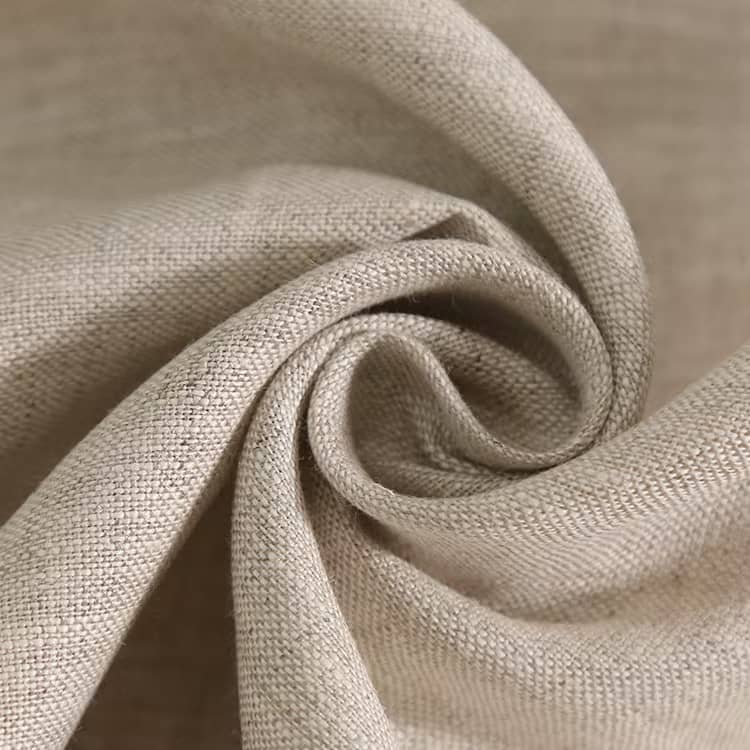
Linen is a natural fiber made from flax plants, known for its breathability and durability. It is one of the oldest fabrics used in clothing and has gained popularity in the fashion industry for its lightweight and casual look.
Features:
✔ Highly breathable – Linen has excellent air permeability, making it ideal for hot and humid climates.
✔ Quick-drying – Absorbs moisture and dries faster than cotton, keeping the wearer cool.
✔ Durable – Stronger than cotton and lasts longer with proper care.
✔ Eco-friendly – Requires less water and pesticides compared to cotton.
Drawbacks:
✖ Wrinkles easily – One of the biggest downsides of linen; it develops visible creases quickly.
✖ Rough texture – Has a coarser feel compared to cotton, though it softens over time.
✖ Less stretch – Linen lacks natural elasticity, so it doesn’t provide much flexibility.
Best for:
- Casual summer T-shirts
- Premium, high-fashion T-shirts
- Eco-friendly and sustainable fashion lines
Linen T-shirts are often blended with cotton to reduce wrinkling and improve comfort while maintaining breathability.
3. Modal
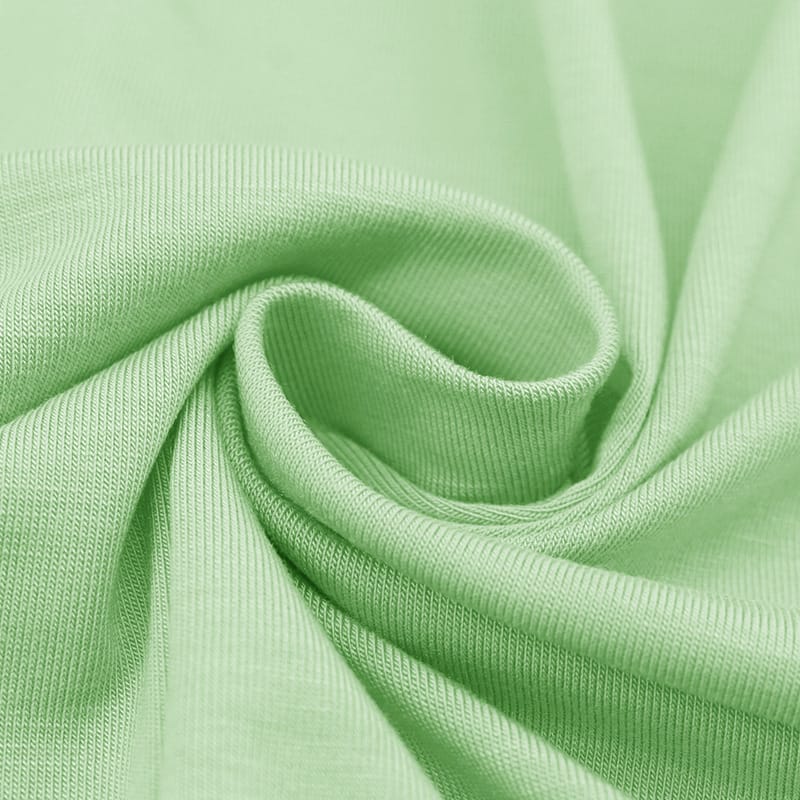
Modal is a regenerated cellulose fiber derived from beechwood pulp. It is a type of rayon but is more refined, making it softer, more durable, and more breathable than standard cotton. Many premium T-shirt brands prefer modal for its luxurious drape, moisture-wicking properties, and silky smooth texture.
Features:
✔ Extremely soft and smooth – Softer than cotton, with a luxurious touch.
✔ Highly breathable – Allows airflow, keeping the wearer cool and comfortable.
✔ Moisture-wicking – Absorbs sweat efficiently, making it great for warm climates.
✔ Wrinkle-resistant – Unlike cotton, modal resists wrinkling and keeps its shape well.
✔ Less prone to shrinkage – Compared to traditional cotton, modal shrinks less after washing.
Drawbacks:
✖ Less durable than cotton – Over time, modal fabric can weaken, especially when frequently washed.
✖ Higher cost – More expensive than standard cotton but cheaper than silk.
✖ Less stretch – Modal doesn’t have natural elasticity unless blended with spandex.
Best for:
- Premium and luxury casual T-shirts
- Innerwear and fitted T-shirts
- Eco-conscious fashion brands
Many high-end brands use modal blends (cotton + modal or modal + spandex) to increase durability while maintaining its soft, silky feel.
4. Lyocell (Tencel®)
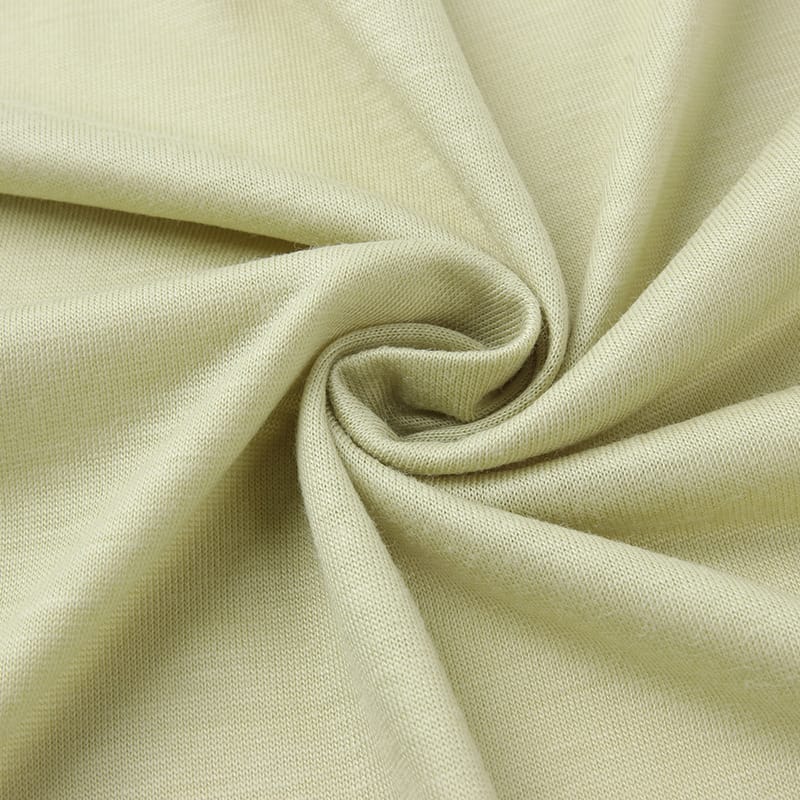
Lyocell, commonly known by the brand name Tencel®, is an eco-friendly regenerated cellulose fiber derived from wood pulp, typically from eucalyptus or bamboo. It is praised for its soft texture, moisture absorption, and sustainability, making it a popular choice for premium and environmentally-conscious fashion brands.
Features:
✔ Soft and silky-smooth – Feels softer than cotton and has a luxurious drape.
✔ Highly breathable – Allows excellent airflow, keeping the wearer cool.
✔ Moisture-wicking – Absorbs 50% more moisture than cotton, making it ideal for warm climates.
✔ Anti-bacterial and hypoallergenic – Naturally resists bacteria growth, great for sensitive skin.
✔ Eco-friendly – Made using a closed-loop production process that recycles water and solvents.
Drawbacks:
✖ Higher cost – More expensive than cotton and modal due to its sustainable production process.
✖ Can be delicate – Though durable, lyocell fabrics may weaken if exposed to excessive friction.
Best for:
- Sustainable and eco-friendly clothing brands
- Luxury casualwear and premium T-shirts
- Athleisure and breathable T-shirts
Lyocell is often blended with cotton or spandex to improve durability and stretch, making it a versatile fabric for both casual and high-end T-shirts.
5. Bamboo Fiber

Bamboo fiber is a sustainable, plant-based fabric known for its natural softness, antibacterial properties, and moisture-wicking capabilities. It has gained popularity among eco-friendly brands looking for sustainable and skin-friendly alternatives to traditional cotton.
Features:
✔ Ultra-soft and silky feel – Softer than regular cotton, with a luxurious drape.
✔ Highly breathable – Excellent air circulation keeps the wearer cool.
✔ Moisture-wicking – Absorbs and evaporates sweat quickly, ideal for warm climates.
✔ Naturally antibacterial and hypoallergenic – Resists bacteria growth and odor, making it great for sensitive skin.
✔ Eco-friendly – Bamboo grows rapidly with minimal water and no pesticides, making it a sustainable choice.
Drawbacks:
✖ Lower durability – Pure bamboo fabric is less durable than cotton and prone to wear over time.
✖ More expensive – Costs more than traditional cotton due to its production process.
✖ Often blended – Most bamboo fabrics are mixed with cotton or polyester to improve longevity and reduce costs.
Best for:
- Sustainable and eco-conscious brands
- Luxury loungewear and casual T-shirts
- Athleisure and moisture-wicking T-shirts
Since pure bamboo fabric is delicate, most brands blend it with cotton or spandex to enhance durability and stretch while maintaining its softness and eco-friendly appeal.
6. Polyester
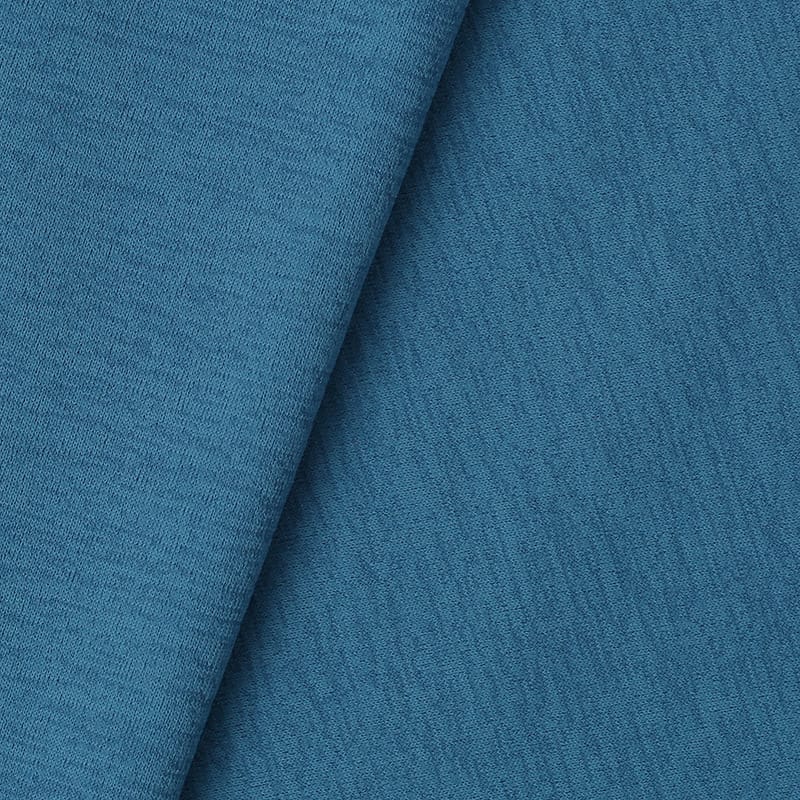
Polyester is a synthetic fiber made from petroleum-based materials, widely used in sportswear, performance apparel, and budget-friendly T-shirts. It is known for its durability, wrinkle resistance, and moisture-wicking properties, making it a popular choice for activewear brands.
Features:
✔ Highly durable – Resistant to wear, stretching, and shrinking, maintaining shape over time.
✔ Wrinkle-resistant – Holds its form without the need for ironing.
✔ Quick-drying & moisture-wicking – Dries much faster than cotton, making it ideal for sportswear.
✔ Lightweight and cost-effective – Cheaper to produce than many natural fibers.
Drawbacks:
✖ Less breathable – Traps heat more than cotton, making it less comfortable in hot weather.
✖ Retains odors – Unlike cotton, polyester can absorb and retain body odors.
✖ Not environmentally friendly – Made from non-renewable resources and contributes to microplastic pollution.
Best for:
- Sports and activewear T-shirts
- Budget-friendly promotional T-shirts
- Moisture-wicking, quick-dry T-shirts for outdoor wear
To improve comfort, polyester is often blended with cotton to create poly-cotton blends that retain polyester’s durability while adding cotton’s softness and breathability.
7. Nylon
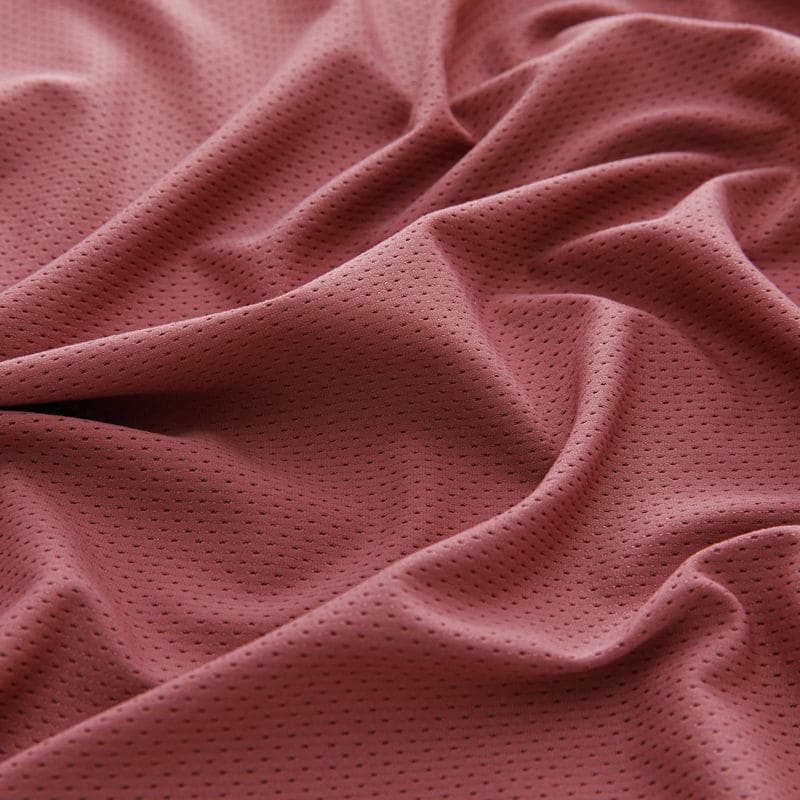
Nylon is a lightweight and durable synthetic fiber commonly used in performance apparel and activewear. While not as popular as polyester for T-shirts, it is favored for moisture-wicking, quick-drying, and abrasion-resistant properties.
Features:
✔ Highly durable and resistant to abrasion – Stronger than polyester and cotton.
✔ Lightweight – Feels airy and soft against the skin.
✔ Quick-drying & moisture-wicking – Efficiently pulls sweat away from the body, making it great for sportswear.
✔ Wrinkle-resistant – Keeps a smooth appearance without ironing.
Drawbacks:
✖ Less breathable than cotton – Can trap heat if not designed with proper ventilation.
✖ Absorbs odors – Similar to polyester, nylon can retain sweat odors if not washed properly.
✖ Not environmentally friendly – Made from petrochemicals and contributes to microplastic pollution.
Best for:
- High-performance sports and activewear T-shirts
- Compression and fitted T-shirts
- Outdoor and adventure wear
Since nylon can feel synthetic, it is often blended with cotton or spandex to create more comfortable and stretchable T-shirts.
8. CVC (Chief Value Cotton)
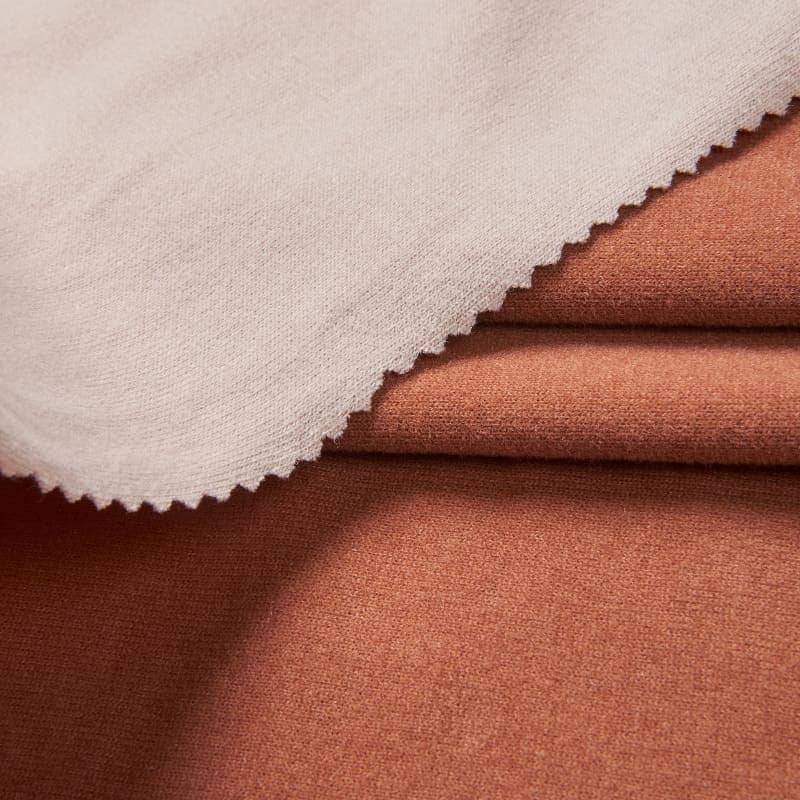
CVC (Chief Value Cotton) is a cotton-polyester blend where cotton content is higher than polyester (typically 60% cotton, 40% polyester). This blend retains cotton’s comfort while adding polyester’s durability and wrinkle resistance, making it a popular choice for wholesale T-shirts.
Features:
✔ Soft and breathable – Feels comfortable like cotton but with added durability.
✔ Less shrinkage – Polyester reduces the shrinkage problems of pure cotton.
✔ More affordable than 100% cotton – While softer than polyester, it’s cheaper than premium cotton fabrics.
✔ Wrinkle-resistant – Holds its shape better than 100% cotton.
Drawbacks:
✖ Not as breathable as pure cotton – Polyester component reduces airflow slightly.
✖ May pill over time – Fabric can develop small lint balls after multiple washes.
Best for:
- Casual and everyday T-shirts
- Budget-friendly wholesale T-shirts
- Promotional and brand merchandise T-shirts
CVC fabrics are a great alternative for brands that want cotton’s softness with polyester’s added strength, making them a reliable choice for mass production.
9. TC (Terylene Cotton / Polyester-Cotton Blend)
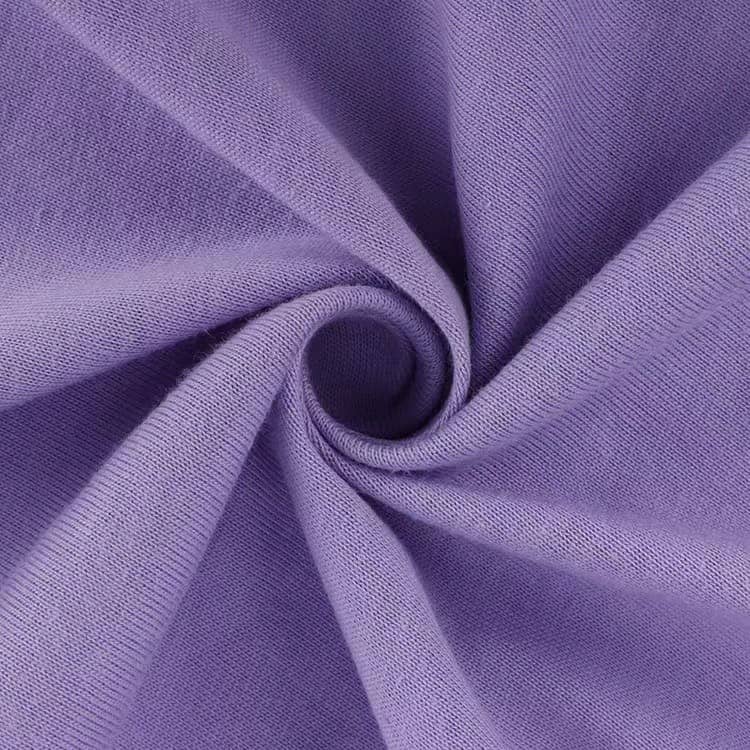
TC fabric is a polyester-cotton blend where polyester content is higher than cotton (typically 65% polyester, 35% cotton). This blend prioritizes polyester’s durability and wrinkle resistance, making it a cost-effective choice for budget-friendly and uniform T-shirts.
Features:
✔ Highly durable and wrinkle-resistant – Holds its shape better than CVC and 100% cotton.
✔ Affordable – Less expensive than cotton-heavy blends, making it a great choice for bulk production.
✔ Less shrinkage – Polyester prevents excessive shrinking after washing.
✔ Quick-drying – Dries faster than cotton, making it great for uniforms and workwear.
Drawbacks:
✖ Less breathable than CVC or 100% cotton – Polyester dominates the blend, reducing airflow.
✖ Can feel synthetic – Has a slightly plastic-like texture, especially in lower-quality versions.
✖ May develop static cling – Polyester fibers can attract static electricity.
Best for:
- Workwear and uniform T-shirts
- Budget-friendly wholesale T-shirts
- Mass production promotional T-shirts
TC fabric is ideal for brands that prioritize cost-effectiveness and durability over breathability. It’s widely used for corporate uniforms, promotional giveaways, and affordable fashion lines.
10. Cotton + Spandex Blend
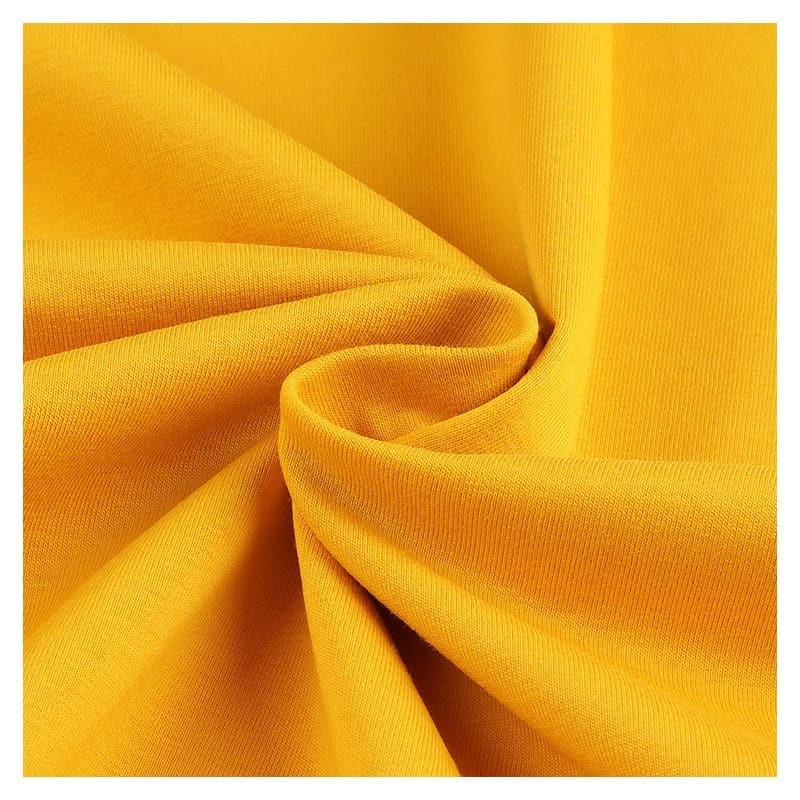
A cotton-spandex blend (commonly 95% cotton + 5% spandex) combines cotton’s softness and breathability with spandex’s stretch and flexibility. This blend is ideal for fitted and stretchy T-shirts that require a comfortable yet form-fitting design.
Features:
✔ Soft and breathable – Feels natural against the skin, like 100% cotton.
✔ Flexible and stretchy – Spandex adds elasticity, allowing for better movement and comfort.
✔ Retains shape well – Unlike 100% cotton, this blend prevents excessive stretching and sagging.
✔ Wrinkle-resistant – Spandex helps maintain a smooth appearance.
Drawbacks:
✖ More expensive than basic cotton or polyester blends – Spandex adds to production costs.
✖ Slightly less breathable than pure cotton – The addition of spandex slightly reduces airflow.
✖ Requires gentle care – Excessive heat (washing or drying) can degrade spandex fibers over time.
Best for:
- Slim-fit and stretchy T-shirts
- Athleisure and activewear T-shirts
- Comfortable and stylish casualwear
This blend is commonly used for fitted T-shirts, athletic wear, and high-fashion basics, making it a favorite for modern, body-hugging styles.
Functional Fabrics
In addition to traditional fabrics, some advanced functional fabrics are designed for specific performance benefits, such as moisture-wicking, temperature regulation, and sustainability. These fabrics are commonly used in sportswear, outdoor gear, and premium fashion brands.
11. Coolmax®

Coolmax® is a high-performance polyester variant designed to wick moisture away from the body and keep the wearer dry.
✔ Superior moisture-wicking – Moves sweat away from the skin quickly.
✔ Breathable and lightweight – Ideal for high-intensity activities.
✔ Quick-drying – Prevents discomfort from sweat buildup.
✔ Resistant to shrinking and wrinkling – Maintains shape well over time.
✖ More expensive than regular polyester
✖ Can feel synthetic compared to cotton
Best for: Sports and performance T-shirts
12. Organic Cotton
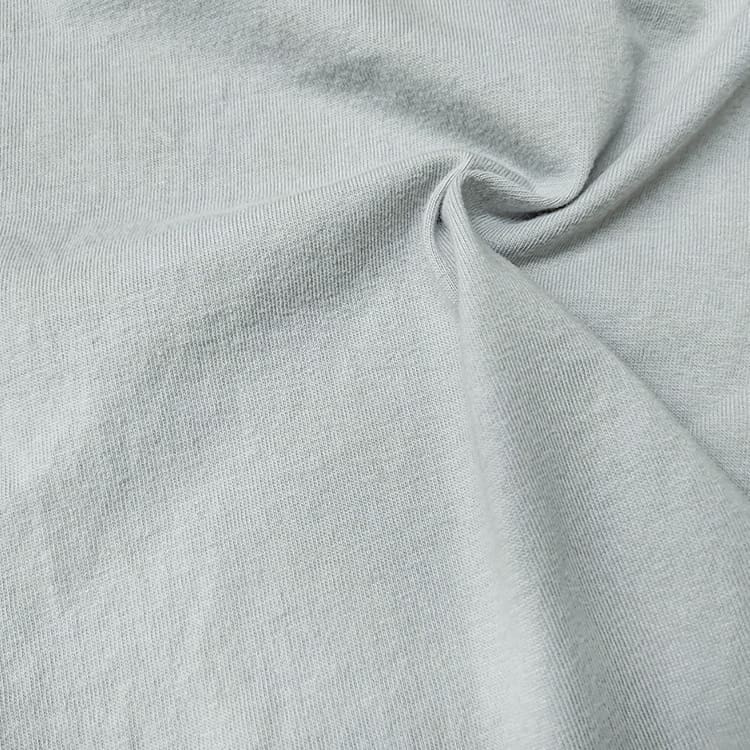
Organic cotton is grown without pesticides or synthetic fertilizers, making it an eco-friendly and skin-friendly alternative to conventional cotton.
✔ Soft and breathable – Feels just as comfortable as regular cotton.
✔ Hypoallergenic – Ideal for sensitive skin.
✔ Sustainable and chemical-free – Environmentally friendly.
✖ More expensive than regular cotton
✖ Limited availability compared to standard cotton
Best for: Sustainable fashion brands and eco-conscious consumers
13. Triacetate
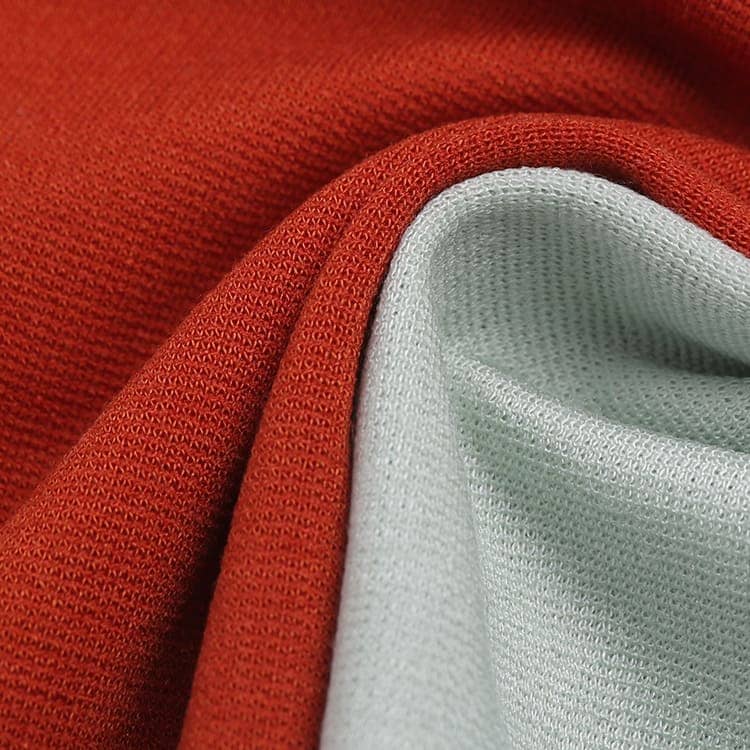
Triacetate is a semi-synthetic fiber derived from wood pulp, known for its silk-like sheen and durability.
✔ Elegant and glossy finish – Mimics the luxurious feel of silk.
✔ Resistant to wrinkles and shrinkage – Easy to maintain.
✔ Quick-drying and breathable
✖ Less stretch compared to spandex blends
✖ More expensive than polyester
Best for: Fashion-forward T-shirts and high-end casualwear
14. Recycled Polyester (rPET)
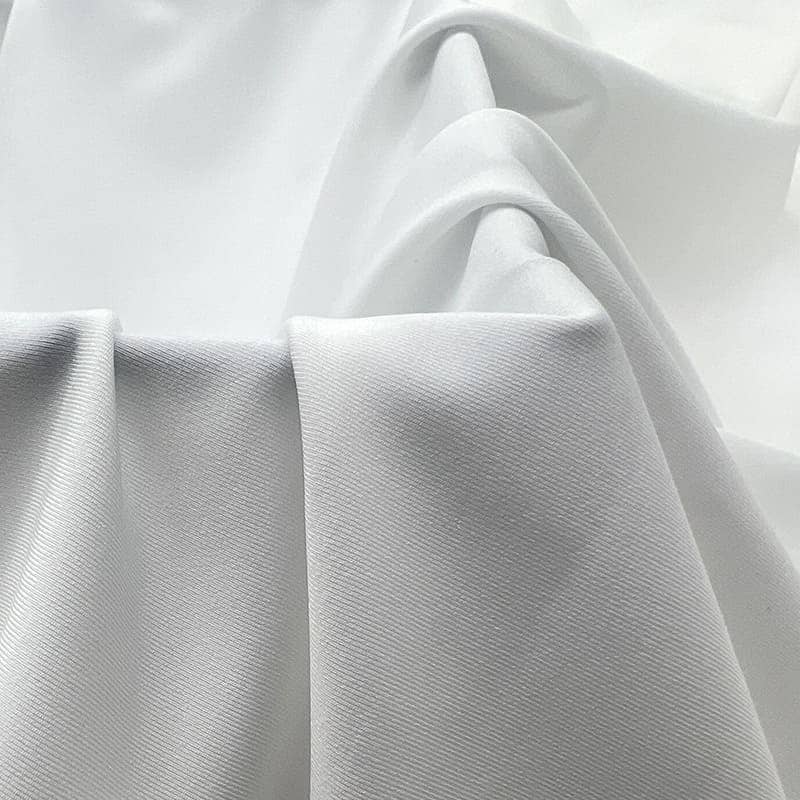
Recycled polyester is made from recycled plastic bottles, offering a more sustainable alternative to regular polyester.
✔ Eco-friendly – Reduces plastic waste.
✔ Durable and wrinkle-resistant – Similar performance to standard polyester.
✔ Affordable compared to other sustainable fabrics
✖ Not as breathable as cotton or bamboo
✖ Can still contribute to microplastic pollution
Best for: Sustainable and performance-oriented T-shirts
Comparing T-Shirt Fabrics: Pros & Cons
To help you choose the right fabric for your T-shirt brand, here’s a comparison table summarizing the key properties, benefits, and drawbacks of different fabrics.
I’ve generated a detailed fabric comparison table summarizing the key properties, benefits, and best use cases of each fabric type. You can review it to easily compare softness, breathability, durability, moisture-wicking properties, wrinkle resistance, and eco-friendliness for different T-shirt fabrics.
| Fabric Type | Softness | Breathability | Durability | Moisture-Wicking | Wrinkle Resistance | Eco-Friendliness | Best Use Cases |
|---|---|---|---|---|---|---|---|
| 100% Cotton | High | High | Medium | Low | Low | Medium | Everyday wear, casual T-shirts |
| Linen | Medium | Very High | High | High | Very Low | High | Summer wear, premium casual |
| Silk | Very High | Medium | Low | Medium | Medium | Low | Luxury fashion, women’s wear |
| Modal | Very High | High | Medium | High | High | High | Premium casual, fitted T-shirts |
| Lyocell (Tencel®) | Very High | High | Medium | High | High | Very High | Eco-friendly fashion, high-end casual |
How to Source the Best T-Shirt Fabric from China
Sourcing high-quality T-shirt fabrics from China can be a game-changer for your brand. With China’s vast textile industry and access to a wide range of fabrics at competitive prices, it is an ideal destination for bulk manufacturing and fabric sourcing. However, selecting the right supplier and ensuring quality control are crucial to avoiding production issues and delays.
Here’s a step-by-step guide to sourcing the best T-shirt fabric from China for your brand.
1. Finding Reliable Fabric Suppliers
China has thousands of fabric suppliers, so choosing the right one is critical. Here’s how you can find a reliable supplier:
Trade Shows – Events like Canton Fair and Intertextile Shanghai allow direct interaction with fabric manufacturers.
Online B2B Platforms – Websites like Alibaba, Made-in-China, and Global Sources list thousands of suppliers, but careful verification is needed.
Factory Visits – If possible, visiting suppliers in Guangzhou, Shenzhen, or Shaoxing (China’s major fabric hubs) can help assess quality firsthand.
Referrals & Recommendations – Working with trusted factories like Valtin Apparel, which already has an established supply chain, reduces sourcing risks.
2. Understanding Fabric Weight (GSM) and Its Impact
Fabric weight is measured in GSM (Grams per Square Meter) and determines the thickness, durability, and quality of a T-shirt.
| GSM Range | Fabric Weight Category | Best Use Cases |
|---|---|---|
| 120-170 GSM | Lightweight T-shirts | Summer T-shirts, promotional wear |
| 180-210 GSM | Medium-weight T-shirts | Casual, everyday wear |
| 220-280 GSM | Heavyweight T-shirts | Premium, winter T-shirts |
🔹 Lower GSM = Lighter fabric, softer feel, but may be less durable.
🔹 Higher GSM = Thicker fabric, more structured, and lasts longer.
Tip: For high-quality casual or premium T-shirts, aim for 220-280 GSM.
3. Yarn Count: What It Means for Fabric Quality
Yarn count refers to the thickness of the yarn used to weave fabric. It is denoted as 20s, 30s, 40s, etc., where a higher number means finer and softer fabric.
| Yarn Count | Fabric Texture | Best for |
|---|---|---|
| 20s-30s | Thicker, more durable | Basic and budget-friendly T-shirts |
| 30s-40s | Softer, smoother | Mid-range fashion T-shirts |
| 40s-50s+ | Ultra-soft, premium feel | High-end, luxury T-shirts |
Tip: If your brand focuses on premium quality, choose 40s or higher for a smoother, finer texture.
4. Requesting Fabric Swatches Before Bulk Production
Before placing a bulk order, always request fabric swatches to inspect:
✔ Texture & softness – Ensure it meets your brand’s standards.
✔ Color accuracy – Check if the color is consistent with your design.
✔ Stretch & durability – Test for shrinkage and elasticity.
✔ Printing compatibility – If you plan to print, test ink absorption and clarity.
Pro Tip: Work with a supplier like Valtin Apparel, which sources custom fabrics from China’s largest fabric markets and can match fabric samples if provided.
Conclusion
Choosing the right T-shirt fabric is a crucial decision for your brand. It affects not only comfort and durability but also printability, cost, and customer satisfaction. Whether you’re targeting budget-friendly, premium, athletic, or sustainable T-shirts, understanding fabric properties will help you make the best sourcing decisions.
Why Choose Valtin Apparel for Your Custom T-Shirts?
At Valtin Apparel, we take the stress out of fabric sourcing by offering:
✔ Access to China’s largest fabric market – We help you find the perfect fabric at the best price.
✔ Custom fabric sourcing – If you have a sample, we can match it or create a similar material.
✔ Full customization – Choose fabric type, GSM, yarn count, treatments, and blends.
✔ Fast production turnaround – 10-14 days for samples, 28-35 days for bulk orders.
✔ Competitive pricing for wholesale buyers – Get high-quality T-shirts at factory-direct rates.
📩 Ready to Start? Contact Us Today!
If you’re looking for high-quality, customizable T-shirt fabrics for your brand, reach out to Valtin Apparel today. We’ll help you find the best materials and manufacture top-tier custom T-shirts for your business.
If you are looking for reliable Chinese T-shirt manufacturers, you can also read our article.
👉 Contact Us Now for inquiries and samples!
FAQs – The Best T-Shirt Fabrics for Your Brand
1. What is the best fabric for T-shirts?
The best fabric depends on your brand’s needs. 100% cotton is soft and breathable, polyester is durable and moisture-wicking, and blends like CVC (cotton-polyester) balance comfort and durability. For premium T-shirts, Modal, Bamboo, or Tencel are great choices.
2. What does GSM mean in T-shirt fabric?
GSM (Grams per Square Meter) measures fabric weight. 120-170 GSM is lightweight (great for summer T-shirts), 180-210 GSM is medium-weight (ideal for everyday wear), and 220-280 GSM is heavyweight (used for premium or winter T-shirts).
3. What is the difference between CVC and TC fabric?
CVC (Chief Value Cotton) has more cotton than polyester (e.g., 60% cotton, 40% polyester), making it softer and more breathable. TC (Terylene Cotton) has more polyester than cotton (e.g., 65% polyester, 35% cotton), making it more durable and wrinkle-resistant but less breathable.
4. What is the most durable fabric for T-shirts?
Polyester, nylon, and CVC blends are highly durable, resistant to shrinking, and wrinkle-free. Heavyweight cotton (200+ GSM) is also long-lasting but may shrink over time.
5. What is the best fabric for printing on T-shirts?
For screen printing, 100% cotton or cotton blends work best as they absorb ink well. For sublimation printing, 100% polyester is required. DTG (Direct-to-Garment) printing works well on combed cotton or bamboo blends for a smooth print finish.
6. How can I source high-quality T-shirt fabric from China?
Find a trusted supplier like Valtin Apparel with access to China’s largest fabric market. Consider factors like fabric weight (GSM), yarn count, and custom blends, and always request fabric swatches before bulk production.
7. Is bamboo fabric better than cotton for T-shirts?
Bamboo fabric is softer, more breathable, and naturally antibacterial, making it great for eco-friendly and premium T-shirts. However, cotton is more affordable and widely available.
8. How do I ensure my T-shirt fabric won’t shrink?
Choose pre-shrunk cotton or poly-cotton blends. Synthetic fibers like polyester do not shrink, while natural fabrics like linen and pure cotton tend to shrink if not pre-treated.
9. What is the most eco-friendly T-shirt fabric?
Organic cotton, bamboo fiber, Tencel (Lyocell), and recycled polyester (rPET) are the most sustainable choices for T-shirts. These fabrics use fewer chemicals and resources compared to conventional cotton or polyester.
10. What is the most popular T-shirt fabric?
The most popular T-shirt fabric is cotton blend, as it is soft, breathable, and comfortable for everyday wear.



